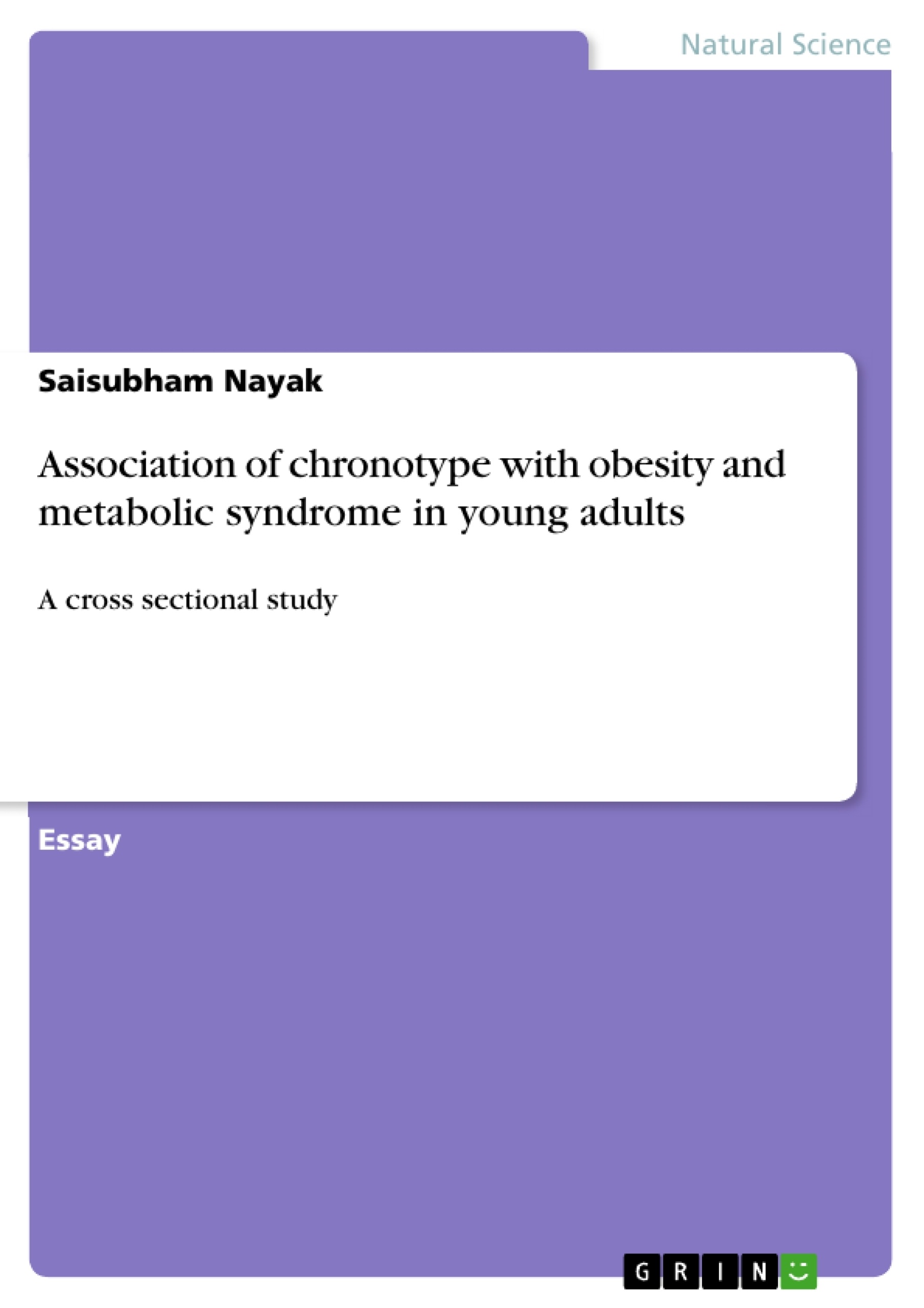This essay examines the impact of chronotype on obesity and metabolic syndrome in young adults. The study is particularly relevant in the context of the rising prevalence of obesity and metabolic syndrome in India, which is already considered the land of diabetes and has a genetic predisposition to coronary heart disease. Chronotype, which reflects a preference for certain times of the day, influences various health and behavioral problems. There is evidence that evening types have a higher risk of eating disorders and chronic sleep deprivation, which in turn is associated with obesity and diabetes. This study aims to analyze the relationship between chronotype and risk of obesity and metabolic syndrome in young Indian adults.
Inhaltsverzeichnis (Table of Contents)
- Introduction
- Review of Literature
- Objectives
- Material and Methods
- Study design
- Sample Size
- Subjects
- Inclusion criteria
- Exclusion Criteria
- Anthropometric measurements
- Recording of Physiological parameters
- Chronotype estimation
Zielsetzung und Themenschwerpunkte (Objectives and Key Themes)
This study aims to investigate the relationship between chronotype and obesity, metabolic syndrome, and insulin resistance in young adults. The research focuses on understanding how an individual's circadian preference, characterized by morningness or eveningness, might influence their metabolic health in this age group.
- Association between chronotype and obesity in young adults.
- Relationship between chronotype and metabolic syndrome in young adults.
- Connection between chronotype and insulin resistance in young adults.
- Influence of lifestyle factors, including diet and sleep patterns, on the relationship between chronotype and metabolic health.
- Potential for interventions targeting lifestyle factors to improve metabolic health in individuals with an evening chronotype.
Zusammenfassung der Kapitel (Chapter Summaries)
- Introduction: This section provides background information on the prevalence of metabolic syndrome and obesity in India, highlighting their significance as risk factors for various health complications. It also introduces the concept of chronotype, emphasizing its role in individual circadian preference and potential association with health and behavior.
- Review of Literature: This chapter presents a summary of existing research on the connection between chronotype, obesity, and metabolic syndrome. It highlights studies that have explored the relationship between evening chronotypes and increased risk for metabolic disorders, as well as the potential influence of lifestyle factors on this association.
- Objectives: This section outlines the specific research questions that the study will address, focusing on investigating the association between chronotype and obesity, metabolic syndrome, and insulin resistance in young adults.
- Material and Methods: This chapter details the study design, sample size, inclusion and exclusion criteria, and the methods used to collect data. It includes information on anthropometric measurements, recording of physiological parameters, and the use of validated questionnaires to assess chronotype.
Schlüsselwörter (Keywords)
This study focuses on the intersection of chronotype, obesity, and metabolic syndrome in young adults, exploring the influence of circadian preference on metabolic health, and the potential for lifestyle interventions to mitigate associated risks. Key themes include chronotype, metabolic syndrome, obesity, insulin resistance, circadian rhythm, and lifestyle factors.
- Quote paper
- Saisubham Nayak (Author), 2023, Association of chronotype with obesity and metabolic syndrome in young adults, Munich, GRIN Verlag, https://www.hausarbeiten.de/document/1473897


